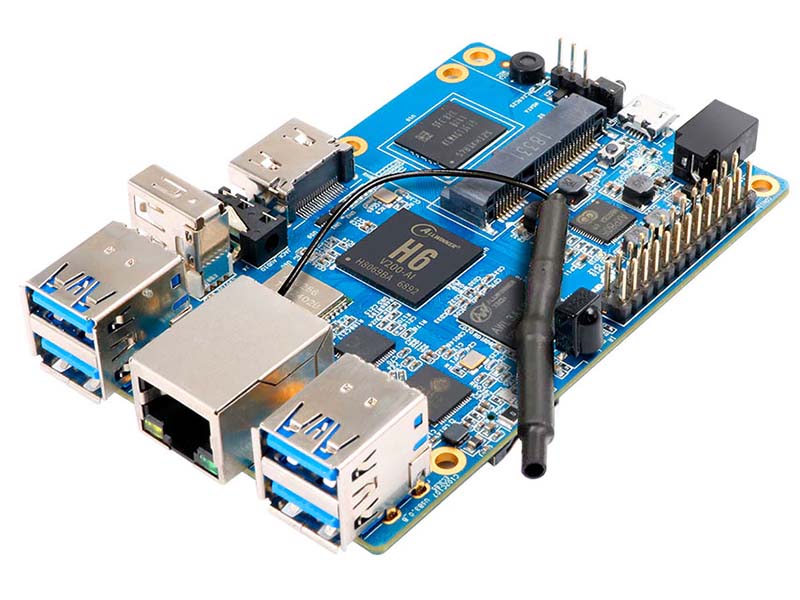
Orange Pi 3 by Shenzhen Xunlong Software CO.,Limited
Orange Pi 3 is for anyone who wants to start creating with technology – not just consuming it. It’s a simple, fun, useful tool that you can use to start taking control of the world around you.
Hardware specification
- H6 Quad-core 64-bit 1.8GHZ ARM Cortex™-A53
- High-performance multi-core GPU Mali T720
- OpenGL ES3.1/3.0/2.0/1.1
- Microsoft DirectX 11 FL9_3
- ASTC(Adaptive Scalable Texture Compression)
- Floating point operation greater than 70 GFLOPS
- AP6256, IEEE 802.11 a/b/g/n/ac, BT5.0
- 10/100M/1000M , ethernet RJ45
- RTL8211
- MIC
- HDMI 2.0a and 3.5 mm AV Jack
- HDMI 2.0a and CVBS
- H265/HEVC Main/Main10 [email protected] High-tier ;4K@60fps, up to 6Kx4K@30fps
- H264/AVC BP/MP/[email protected], MVC, 4K@30fps
- VP9,Profile 0/2, 4K@30fps
- AVS+/AVS JIZHUN profile@level 6.0, 1080P@60fps
- Supports RC mode
- Supports x1 Gen2(5.0Gbps) lane
- Complies with PCI Express Base 2.0 Specification
- DC input,MicroUSB (OTG)
- AXP805
- 1USB 2.0 Host, 1USB OTG 2.0
- 4*USB 3.0 Host
- 26 Pin GPIO
Purchase
Contribute
Have some info to add for this board? Edit the source for this page here.
Adafruit Blinka Installation
We use a special library called adafruit_blinka (named after Blinka, the CircuitPython mascot) to provide the layer that translates the CircuitPython hardware API to whatever library the Linux board provides.
For example, on Raspberry Pi we use the python RPi.GPIO library. For any I2C interfacing we'll use ioctl messages to the /dev/i2c device. For SPI we'll use the spidev python library, etc. These details don't matter so much because they all happen underneath the adafruit_blinka layer.
